Billiards is an exciting game that combines skill, precision and strategic thinking. It doesn’t matter if you are new to holding a cue or already have experience: understanding the main rules and effective tactics is the key to successful play. This article is your guide to the world of sports: we will explain in detail how to play American pool.
Equipment and terminology
A standard pool table is 274 x 137 cm in size. The surface of the lining provides uniform friction, the sides give a return coefficient of up to 0.9. The balls weigh about 170 g, diameter – 57 mm. The cue is made of maple or composite and is 147 cm long. The holes have a bevel and a diameter with a tolerance that allows a ball to pass through with a clearance of 2-3 mm.
To understand how to play American pool, it is necessary to know the basic concepts: a stroke with the hand, after a foul; personalized – target and pocket advertising; error – an error in the technique or the rules; stalemate – a draw because it is not possible to play; The black ball is the last ball in group 8; roll – first hit from a triangle; combination – playing through another ball.
How to play American pool: rules and formats
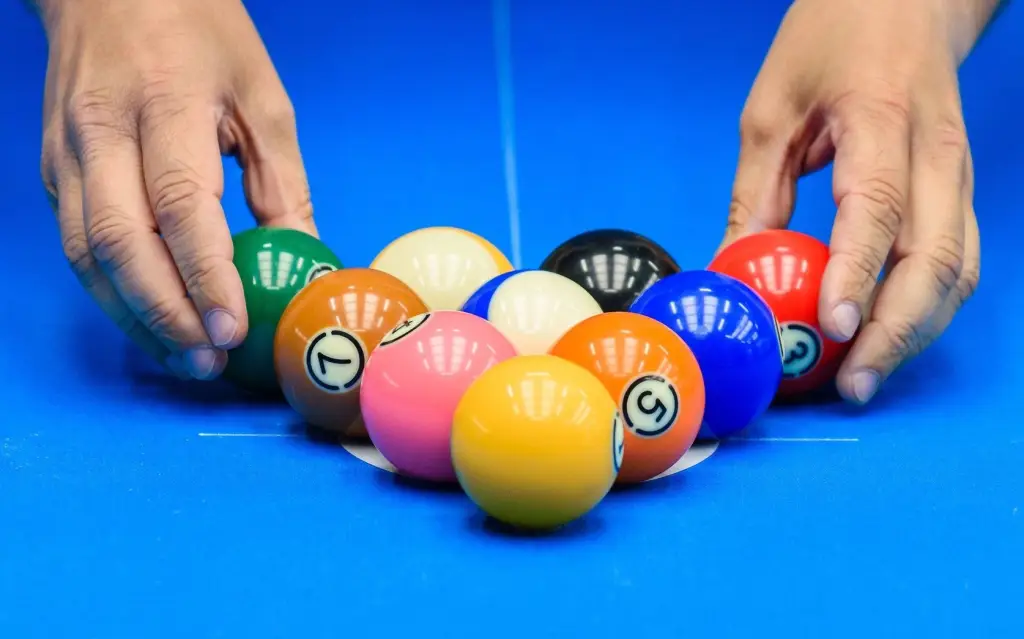 The game is played with a set of 16 balls: 15 numbered balls and one cue ball. There are several popular formats. The rules of each mode determine their own tactics:
The game is played with a set of 16 balls: 15 numbered balls and one cue ball. There are several popular formats. The rules of each mode determine their own tactics:
- The Pool 8 format consists of two pools: plain (1-7) and striped (9-15). The player must first pot all the balls in his group, then the black (8th). A wrong move by black results in an early loss.
- In 9-ball pool, you must pot balls 1 through 9 in the correct order. The player gets the lowest number on the table, but can pot any ball with a combination. A successful piece on the 9th brings victory. The rules of billiards include: fouls for hitting the wrong ball, not hitting the cushion after a shot, the cue ball falling into a pocket, and the ball going off the table. In case of repeated fouls, the opponent takes his turn and may receive a shot.
Match algorithm: logic, purpose, implementation
Each game begins with building the pyramid (triangle) and throwing the throw. A successful result is one ball played, or at least four balls scattered along the sides. Then the player performs a series of attacks aimed at the allowed group. Displacement – one attempt. A pot ball is a continuation. A foul is a change in movement.
To learn how to play American pool, it is important to follow the following principles:
- Control of the cue ball: direction, bounce, stop.
- Calculation of the angle of attack and side return.
- Evaluate the position of the next shot before performing the current shot. Minimize impact force while maintaining accuracy.
- Know the risk zones: potential breakage, pinching, pocket closure.
American Pool strategies: how to play regularly and win
Tactics play a key role. Intuition only works in combination with technical skills. An experienced player limits risks and provokes mistakes from his opponent. To understand strategies, it is necessary to take into account the position of each ball, the possible development scenario, the combination possibilities and the completion zone.
Control of a table begins with the selection of groups. After the player has potted the first ball, he gets his half back. It is important to assess which group has the best position. The strategist quickly clears the important balls and brings the cue ball to the center. At the end of the movement, leave the position for the next shot: it is the positional play that determines the winner.
Beginner mistakes: acting blindly, using force instead of precision, ignoring commands, ignoring the throw. An advanced player calculates the consequences well: if the ball falls, where will the cue ball end up? Will the next square open? Will the opponent be able to take a comfortable position?
Ordered strikes and their role in the battle for positions
Some modes require an order (giving up a ball and a pocket before execution). This is not a formality. This approach shows that you have the situation under control and eliminate risks. Trust is important: any mistake leads to loss of the game. The player uses the order to extend the series. By getting the ball into the designated pocket, you gain a moral advantage and control over the situation. If you do not place an order, you run the risk of disputes, especially in tournaments and when playing for points. It is the personal stroke that, if executed correctly, allows you to play American pool at a professional level. This is a sign of a systematic approach, not improvisation.
When the rule is a weapon: foul, putt and punch
A foul occurs when there is a mistake in the shot, but also when the sequence of the shot is not correct, the balls are touched, there is too much thought (the timer) or the shot is repeated. The opponent gets the ball out of his hand and can put it anywhere on the table. This is the critical moment: a foul leads to loss of control.
A stalemate is a draw when the same position is repeated several times, the opponent cannot complete the position or when there are mutual ‘withdrawing’ tactics. This rarely happens, but it has an impact on the structure of the tournament. Understanding fouls and draws is essential when learning the rules of American pool: these nuances determine the outcome.
American billiards from the perspective of a beginner
The beginner overestimates the power and underestimates the course. The urge to “score at all costs” leads to a loss of position. Progress begins with determining your stance, adjusting your sights and refining your grip. By analyzing your own mistakes and consistently working on solutions, you build confidence.
Recommendations for beginners include:
- Attack without haste.
- Control force and torque.
- Use chalk for stabilization.
- Read sideways: the angle of attack is equal to the angle of rebound.
- Be aware of the importance of every detail of the action.
How to play American Pool: Conclusions
 American billiards develops logic, motor skills and reaction time. It is not the strongest who wins, but the most accurate and calculating. Strategy, knowledge of the rules of pool, control of the cue ball and positional play form the basis for success. Learning to play pool is done by making smart shots, adapting to the situation and constantly developing your accuracy. Every ball is a solution, every move is a sequence. The game teaches you to see, think and win.
American billiards develops logic, motor skills and reaction time. It is not the strongest who wins, but the most accurate and calculating. Strategy, knowledge of the rules of pool, control of the cue ball and positional play form the basis for success. Learning to play pool is done by making smart shots, adapting to the situation and constantly developing your accuracy. Every ball is a solution, every move is a sequence. The game teaches you to see, think and win.


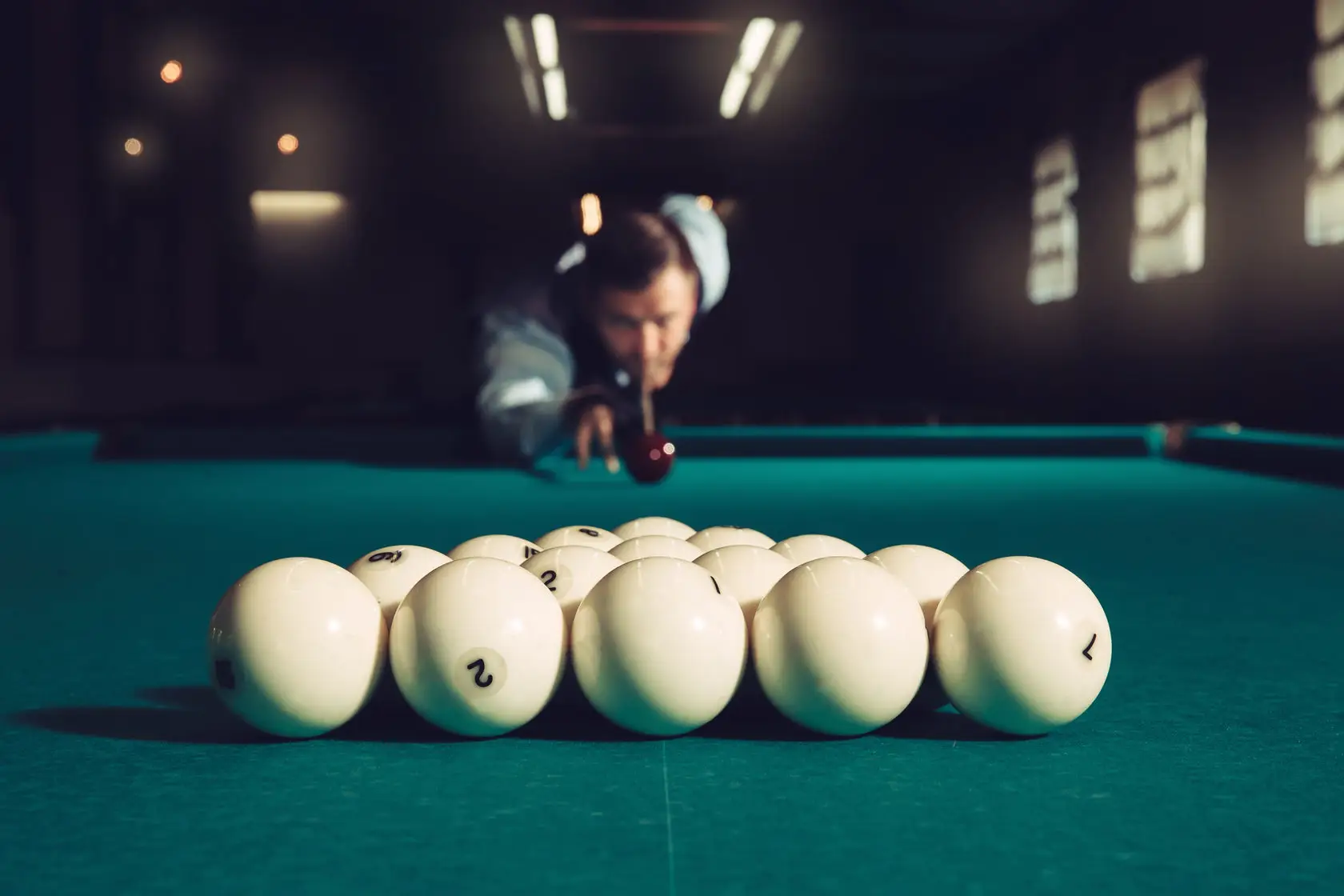
 Russian billiards is not based on strength, but on precision, calculation and foresight. Physics, geometry and motor skills work together in delicate balance during the shot. To understand how to consistently pot balls in Russian billiards, the player determines the point of contact not only based on the position of the target ball, but also based on the backward trajectory of the cue. Every millimetre of the movement is part of the formula.
Russian billiards is not based on strength, but on precision, calculation and foresight. Physics, geometry and motor skills work together in delicate balance during the shot. To understand how to consistently pot balls in Russian billiards, the player determines the point of contact not only based on the position of the target ball, but also based on the backward trajectory of the cue. Every millimetre of the movement is part of the formula.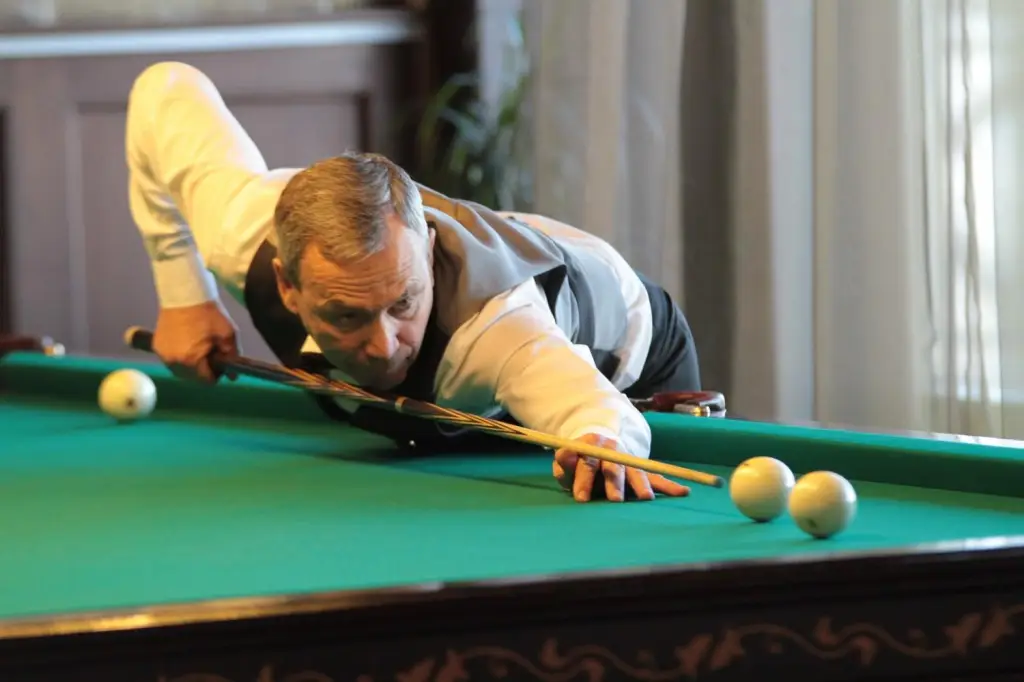 This format requires discipline, patience and an understanding of the mechanics. The ability to make accurate shots in Russian billiards requires clear technique, working on mistakes and practising standard positions. With each shot, the player builds a logical chain: posture, aim, action, control, follow-through. The right training system turns the game into a professional art, where every ball potted is the result of hundreds of hours of perfected movements.
This format requires discipline, patience and an understanding of the mechanics. The ability to make accurate shots in Russian billiards requires clear technique, working on mistakes and practising standard positions. With each shot, the player builds a logical chain: posture, aim, action, control, follow-through. The right training system turns the game into a professional art, where every ball potted is the result of hundreds of hours of perfected movements.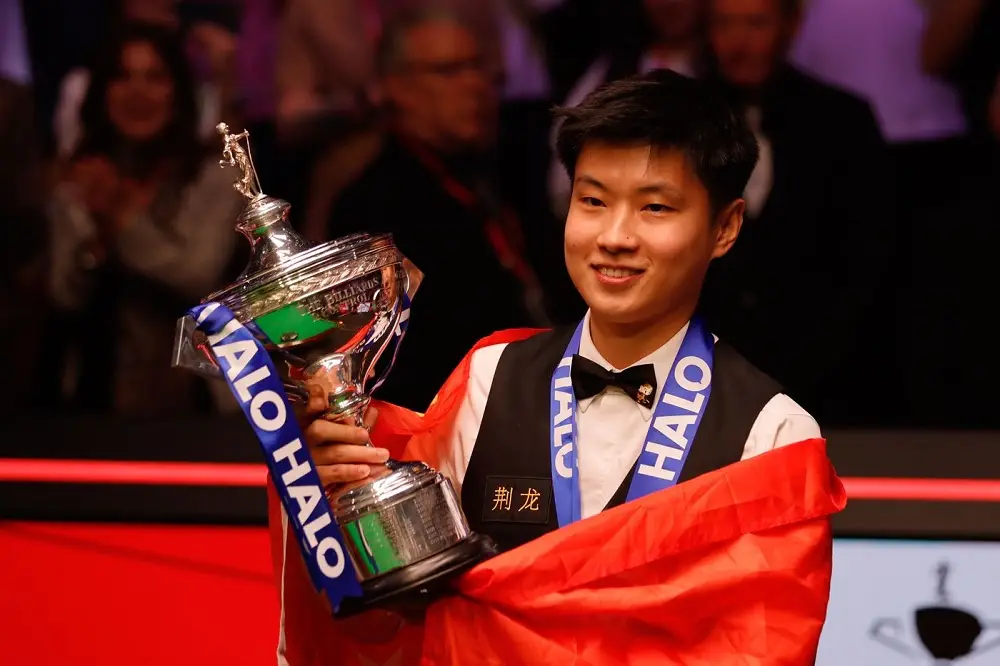
 The big unknown of the tournament – who was not a member of the Main Tour, did not participate in qualifying tournaments and had no sponsorship contracts – won the world championship. An amateur snooker player won the world championship, news that surprised the experts. He made it through the entire qualifying round without losing a single match, eliminated three former champions and achieved the maximum break twice.
The big unknown of the tournament – who was not a member of the Main Tour, did not participate in qualifying tournaments and had no sponsorship contracts – won the world championship. An amateur snooker player won the world championship, news that surprised the experts. He made it through the entire qualifying round without losing a single match, eliminated three former champions and achieved the maximum break twice.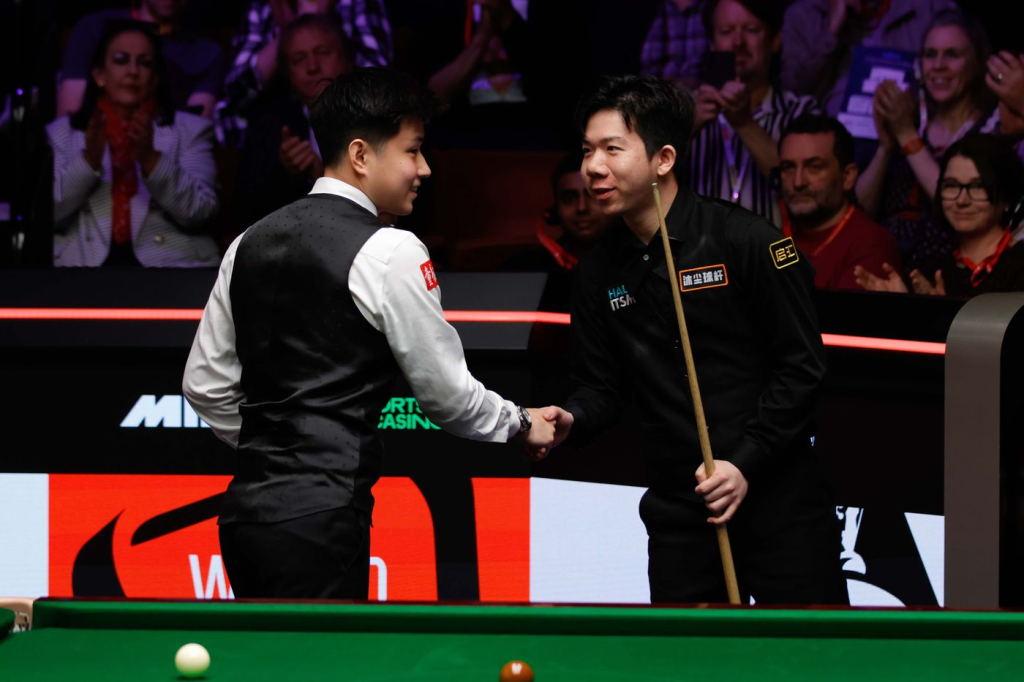 In 2025, snooker reached a turning point. The victory of an outsider, the fall of the greats, commercial growth and a change of pace: all this marked a new direction in the evolution of the sport. The tournament broke with the old structures and showed that the title of champion is no longer reserved for the giants of the rankings. The results of the 2025 World Snooker Championship will go down in history as a symbol of an era of change.
In 2025, snooker reached a turning point. The victory of an outsider, the fall of the greats, commercial growth and a change of pace: all this marked a new direction in the evolution of the sport. The tournament broke with the old structures and showed that the title of champion is no longer reserved for the giants of the rankings. The results of the 2025 World Snooker Championship will go down in history as a symbol of an era of change.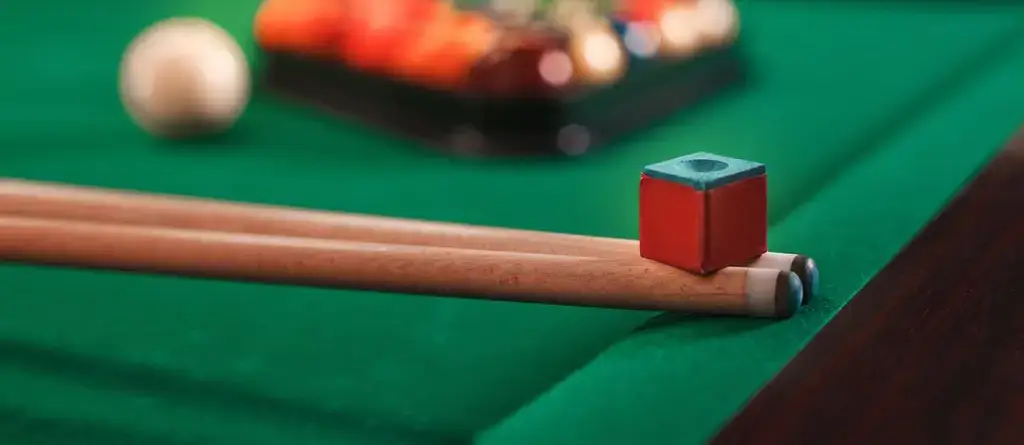
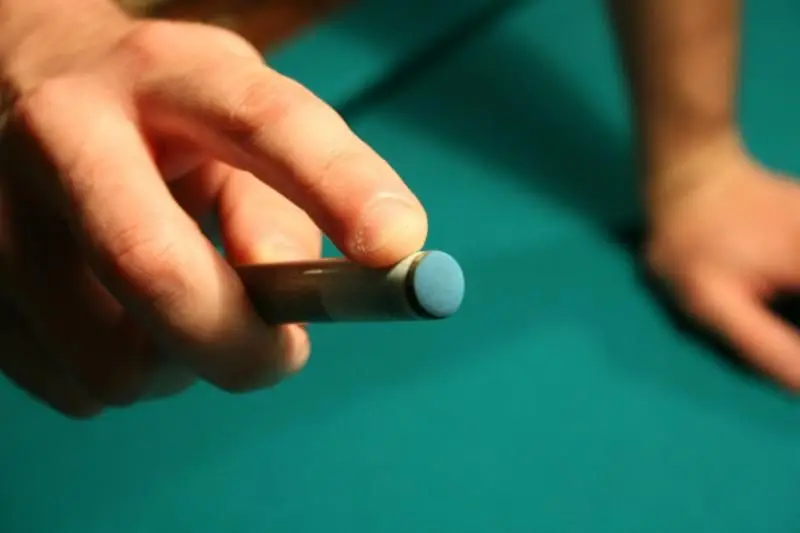 The first references to billiard cues date back to the mid-19th century. Initially, alabaster powder and ground limestone were used, which were applied by hand to leather stickers. The breakthrough came with the invention of a compact block in the shape of a cue.
The first references to billiard cues date back to the mid-19th century. Initially, alabaster powder and ground limestone were used, which were applied by hand to leather stickers. The breakthrough came with the invention of a compact block in the shape of a cue. Billiards is a game of precision, not power. The entire logic is based on the predictability of contact. This raises the question of what chalk is used for in billiards, not as a decorative element, but as a technical aid to control grip. Professional players never miss an opportunity to renew the layer, because they know that it is not muscle strength that matters, but the coating. And precision in billiards is the result of thousands of correctly prepared shots.
Billiards is a game of precision, not power. The entire logic is based on the predictability of contact. This raises the question of what chalk is used for in billiards, not as a decorative element, but as a technical aid to control grip. Professional players never miss an opportunity to renew the layer, because they know that it is not muscle strength that matters, but the coating. And precision in billiards is the result of thousands of correctly prepared shots.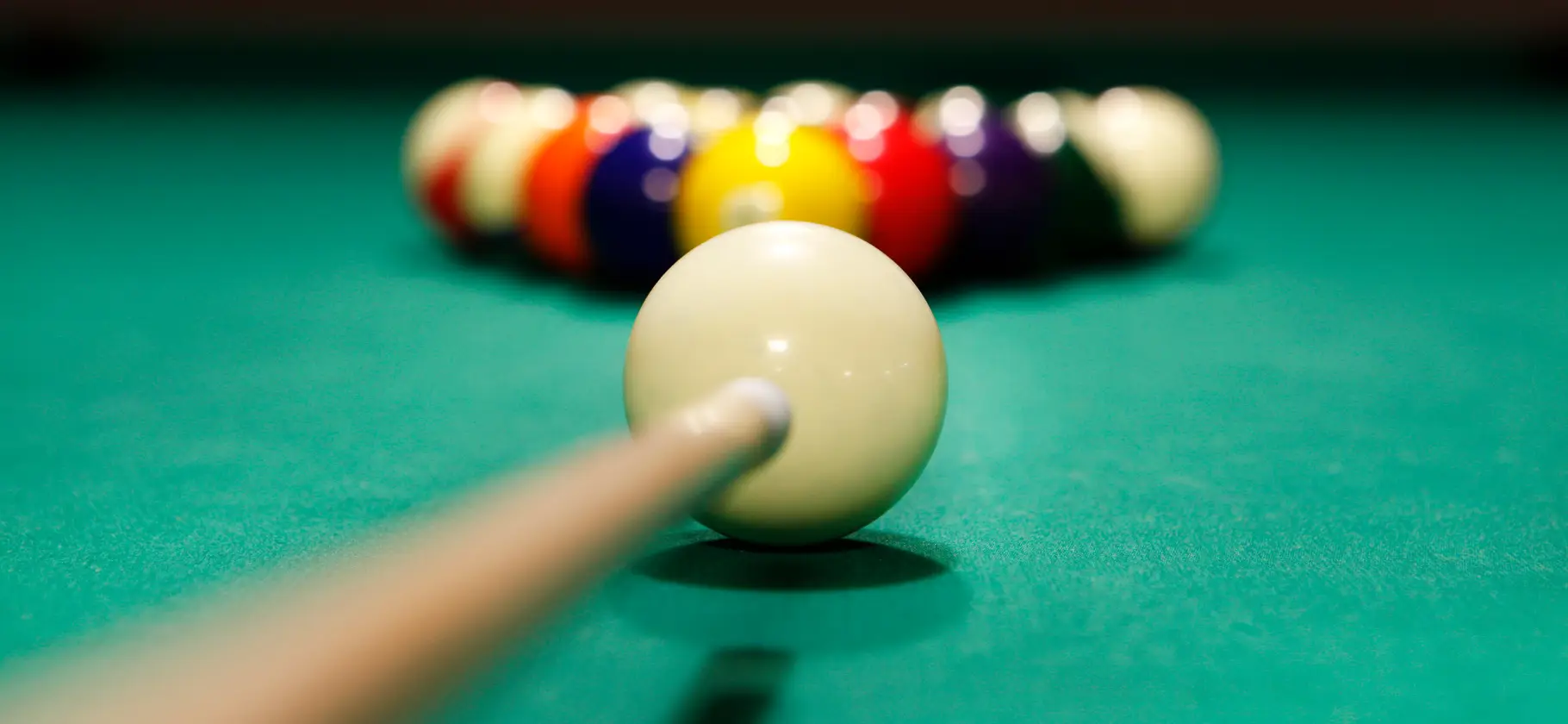
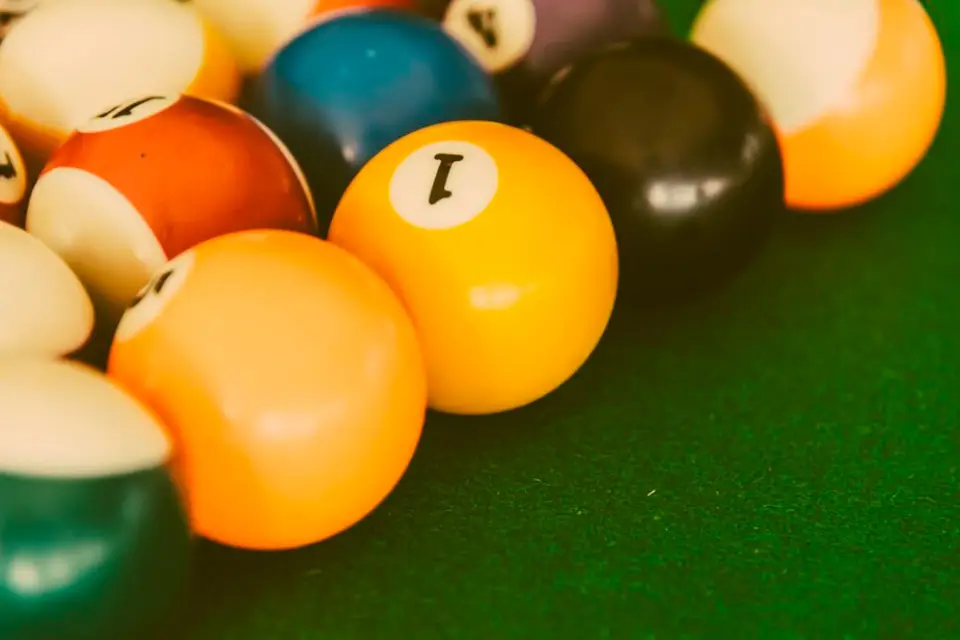 One of the crucial factors in aiming is the synchronisation of the body, the cue and the line of sight. The shoulders, elbows, hands, head and cue must form a single plane in relation to the table. When aiming in billiards, turning the body, tilting the shoulders, turning the elbow or moving the centre of the head is a no-no. Any deviation causes a twist in the line of strike and shifts the point of impact.
One of the crucial factors in aiming is the synchronisation of the body, the cue and the line of sight. The shoulders, elbows, hands, head and cue must form a single plane in relation to the table. When aiming in billiards, turning the body, tilting the shoulders, turning the elbow or moving the centre of the head is a no-no. Any deviation causes a twist in the line of strike and shifts the point of impact.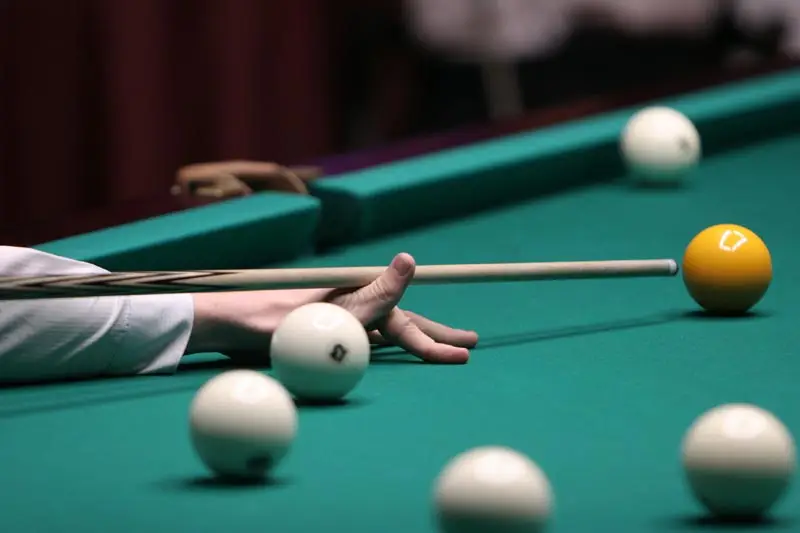 Real progress does not begin with another hour at the table, but with the moment when you focus on the process rather than the goal. The technique of aiming in billiards is not based on the movement of the hand, but on thinking. A structure emerges: observation, alignment, stabilisation, conscious stroke. It is precisely this cycle that the professional creates. The result is not a series of successful shots, but the ability to predict the result before the shot.
Real progress does not begin with another hour at the table, but with the moment when you focus on the process rather than the goal. The technique of aiming in billiards is not based on the movement of the hand, but on thinking. A structure emerges: observation, alignment, stabilisation, conscious stroke. It is precisely this cycle that the professional creates. The result is not a series of successful shots, but the ability to predict the result before the shot.
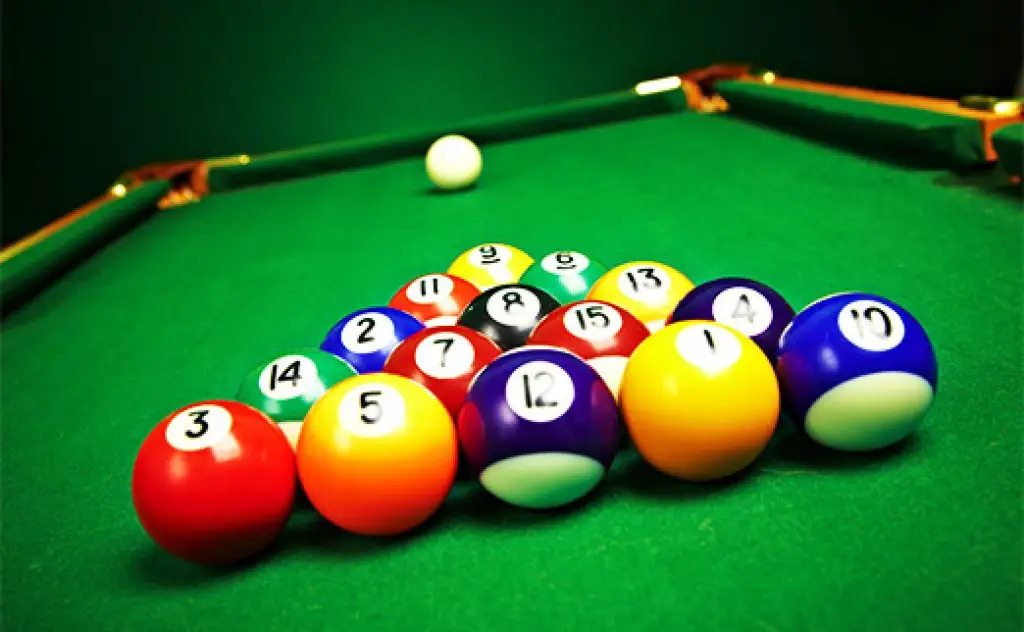 Constantly changing focus from one ball to another, aiming from different angles and lighting: all this forms a training for the eyes similar to ophthalmological exercises. The benefits of billiards for eye health are reflected in strengthening the eye muscles and improving the ability to quickly adjust focus.
Constantly changing focus from one ball to another, aiming from different angles and lighting: all this forms a training for the eyes similar to ophthalmological exercises. The benefits of billiards for eye health are reflected in strengthening the eye muscles and improving the ability to quickly adjust focus.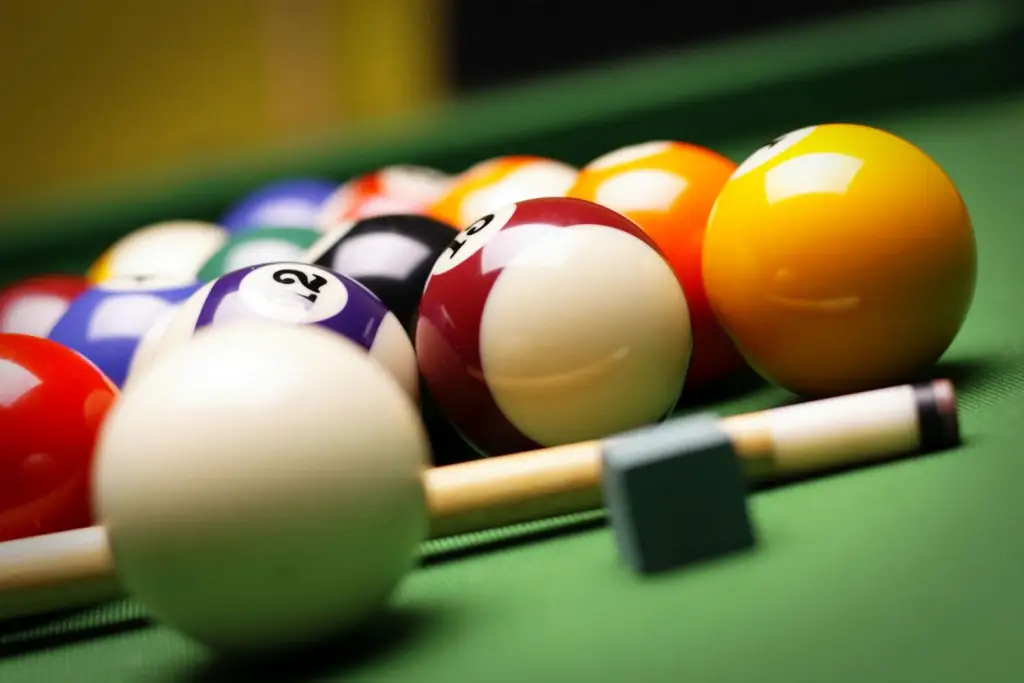 The health benefits of billiards lie in its versatility. This activity does not require special preparation, is accessible to all ages and at the same time provides constant physical and mental training. This discipline is not a substitute for the gym, but a complement to it, because it strengthens posture, develops attention and improves mood.
The health benefits of billiards lie in its versatility. This activity does not require special preparation, is accessible to all ages and at the same time provides constant physical and mental training. This discipline is not a substitute for the gym, but a complement to it, because it strengthens posture, develops attention and improves mood.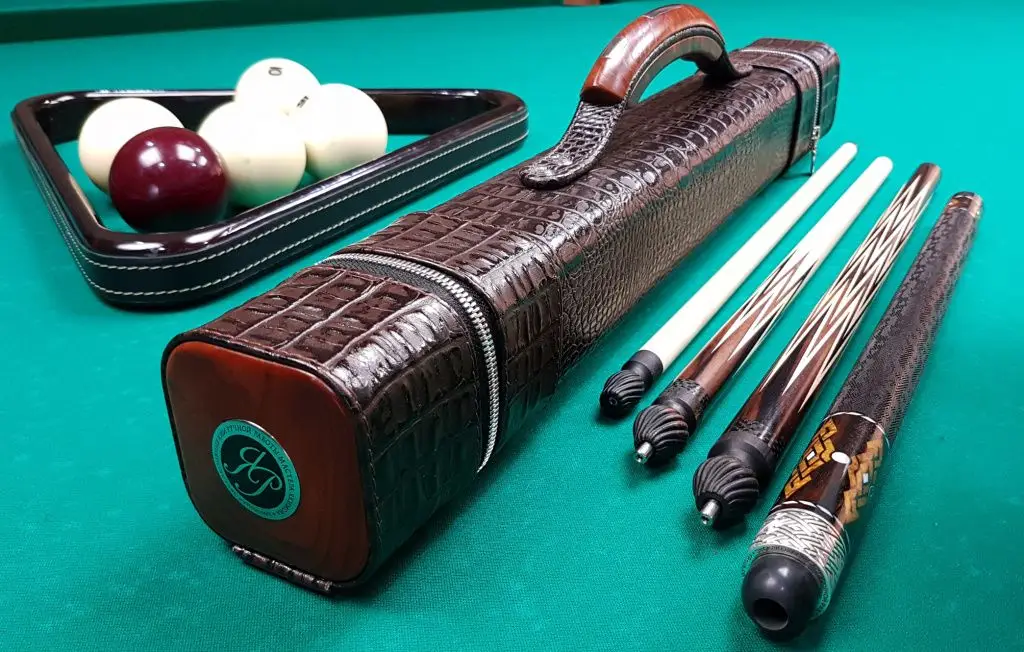
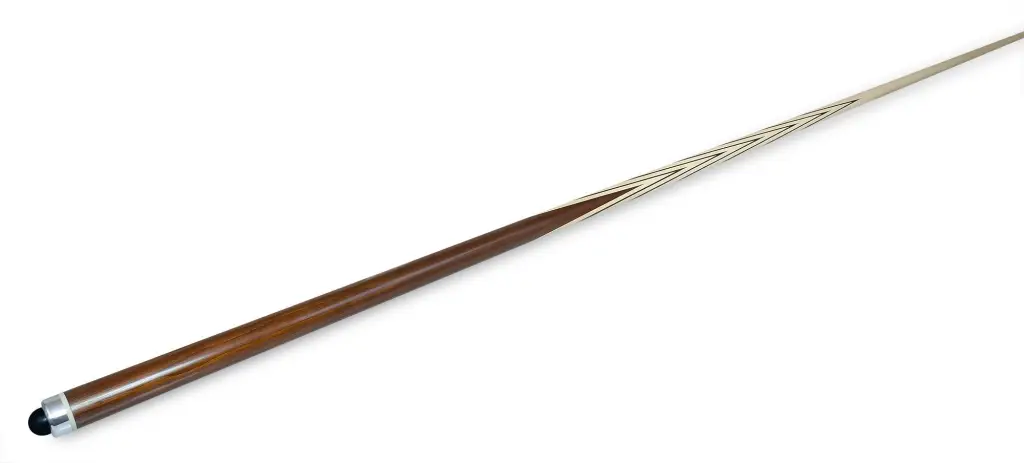 The right cue is not just an instrument, but an extension of the player’s hand. Length, weight and balance have a direct impact on the comfort, accuracy and efficiency of your strokes. By taking these parameters into account, you can choose the best option that will help you master the process and improve your skills.
The right cue is not just an instrument, but an extension of the player’s hand. Length, weight and balance have a direct impact on the comfort, accuracy and efficiency of your strokes. By taking these parameters into account, you can choose the best option that will help you master the process and improve your skills.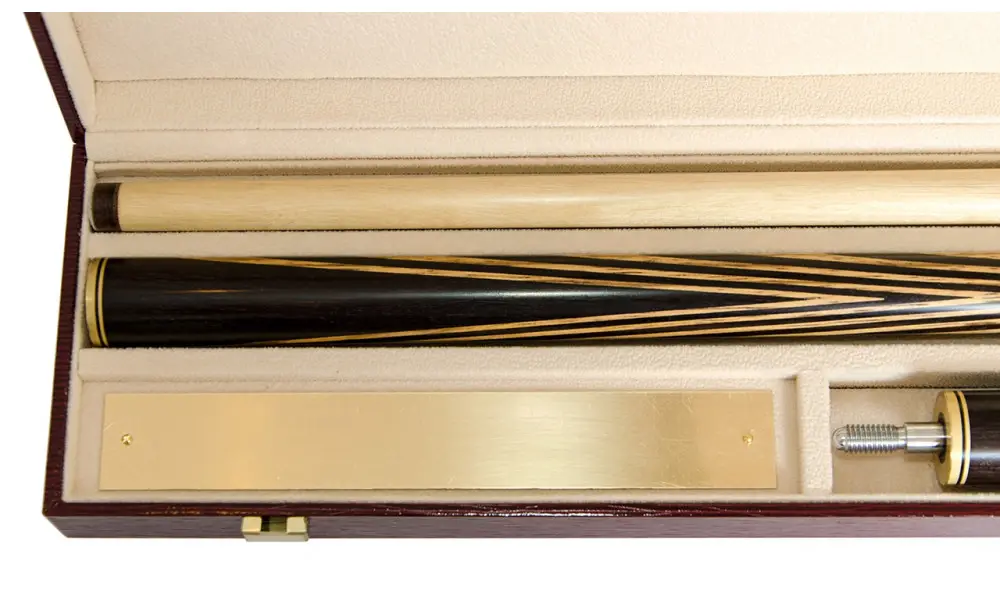 Choosing a cue for Russian billiards is an important process that affects accuracy, comfort and control in the game. The main criteria are length, weight, balance, material and cut. Novice players should pay attention to universal models that help them adapt to the playing process. Professionals choose cues taking into account playing style and technical parameters. A correctly chosen instrument is the basis of success, as it allows you to develop your skills and achieve new victories.
Choosing a cue for Russian billiards is an important process that affects accuracy, comfort and control in the game. The main criteria are length, weight, balance, material and cut. Novice players should pay attention to universal models that help them adapt to the playing process. Professionals choose cues taking into account playing style and technical parameters. A correctly chosen instrument is the basis of success, as it allows you to develop your skills and achieve new victories.
 Winning the Masters in 2008 marked a new era in Mark Selby’s career. It was a tournament in which his tactics shone. In the snooker final against Stephen Lee, Selby built a game full of defensive decisions and precise attacking strokes. The 10-3 victory underlined that his style is not only about defending, but also about his ability to finish a series with spectacular strokes. This success reinforced his status as a tactical genius and player who can dominate major tournaments.
Winning the Masters in 2008 marked a new era in Mark Selby’s career. It was a tournament in which his tactics shone. In the snooker final against Stephen Lee, Selby built a game full of defensive decisions and precise attacking strokes. The 10-3 victory underlined that his style is not only about defending, but also about his ability to finish a series with spectacular strokes. This success reinforced his status as a tactical genius and player who can dominate major tournaments. Mark Selby’s snooker tactics have made his name synonymous with excellence. His approach has shown that intelligence and calculation are as important as technique. His style of play, based on patience, analysis and self-control, has become a model for future generations.
Mark Selby’s snooker tactics have made his name synonymous with excellence. His approach has shown that intelligence and calculation are as important as technique. His style of play, based on patience, analysis and self-control, has become a model for future generations.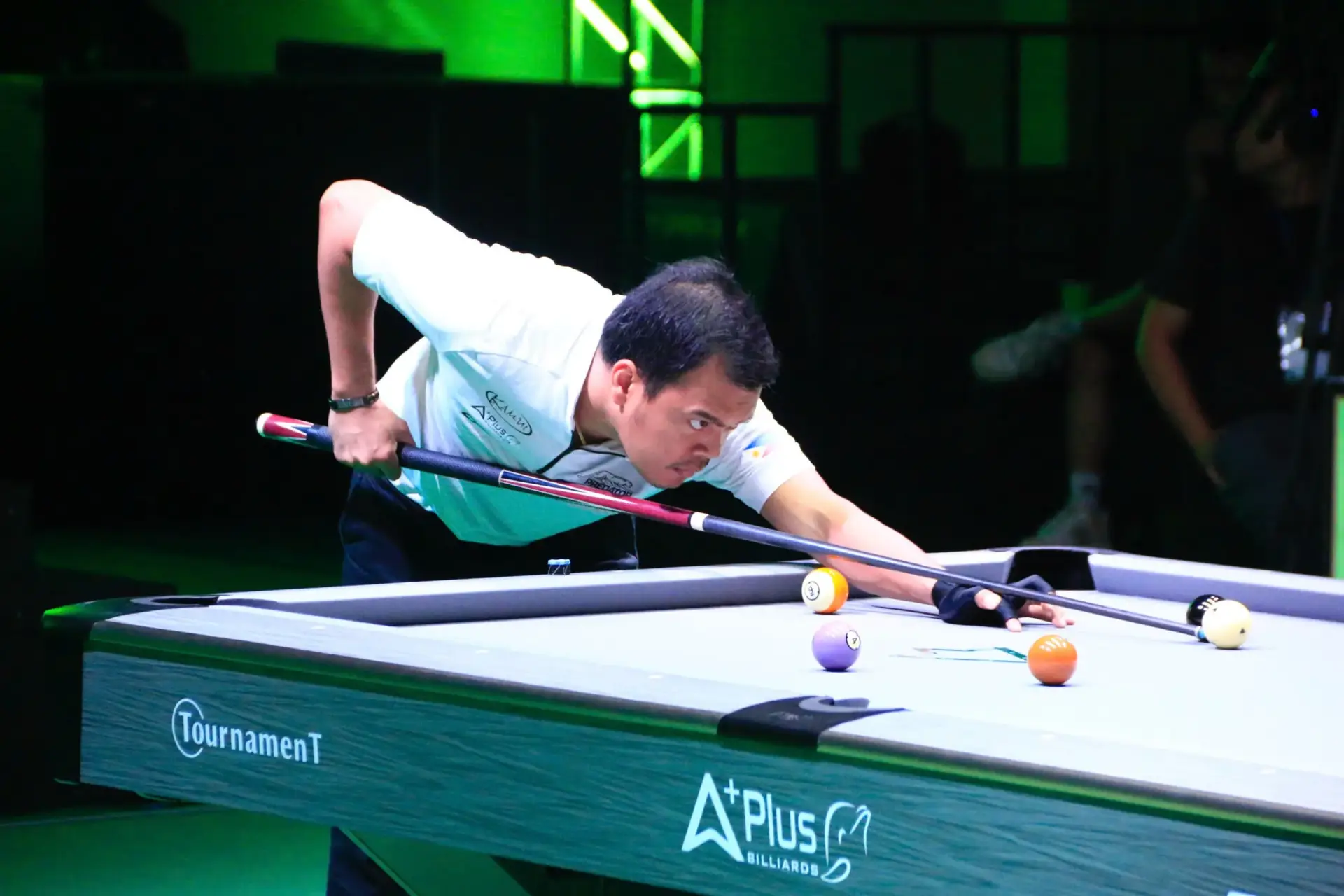
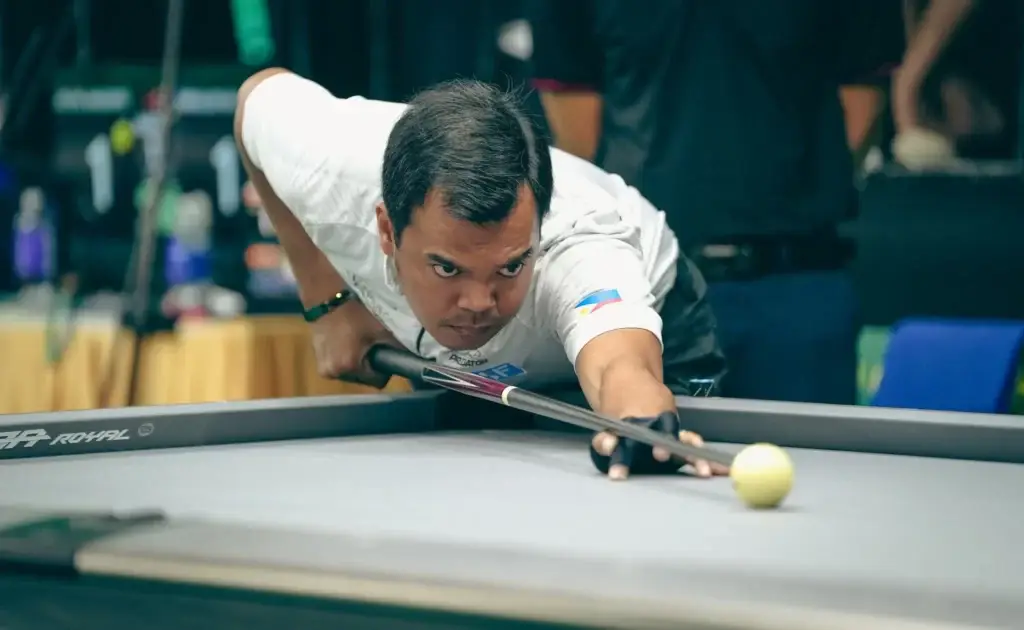 Efren Reyes not only achieved the status of the best billiards player, he also faced many exceptional opponents who challenged him throughout his career. Among the billiards legends against whom the athlete played colorful matches, Johnny Archer and Shane van Boing stand out. These players represented the elite and produced confrontations that captured the attention of millions of spectators.
Efren Reyes not only achieved the status of the best billiards player, he also faced many exceptional opponents who challenged him throughout his career. Among the billiards legends against whom the athlete played colorful matches, Johnny Archer and Shane van Boing stand out. These players represented the elite and produced confrontations that captured the attention of millions of spectators. Efren Reyes remains a symbol of excellence in billiards. His story shows that, even in the face of fierce competition, it is possible to maintain one’s individuality and achieve international recognition. Billiards Biography is not only a chronicle of victories, but also a guide to action for those who want to achieve their dreams.
Efren Reyes remains a symbol of excellence in billiards. His story shows that, even in the face of fierce competition, it is possible to maintain one’s individuality and achieve international recognition. Billiards Biography is not only a chronicle of victories, but also a guide to action for those who want to achieve their dreams.
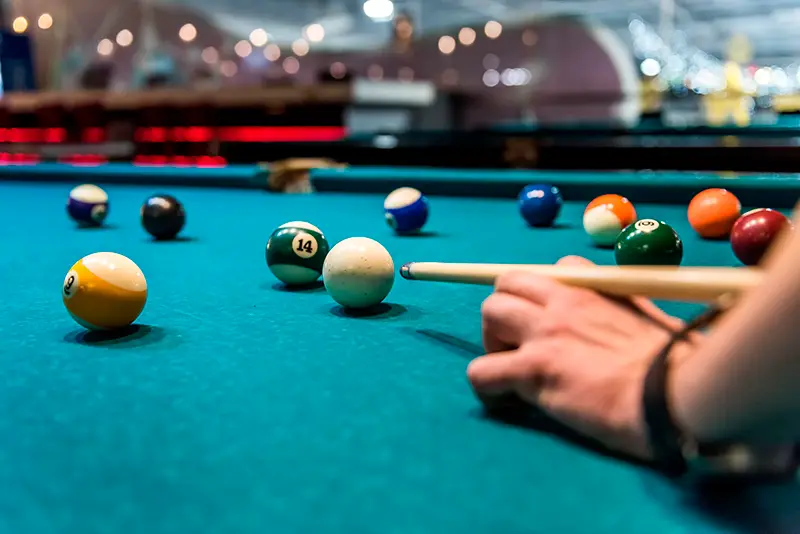
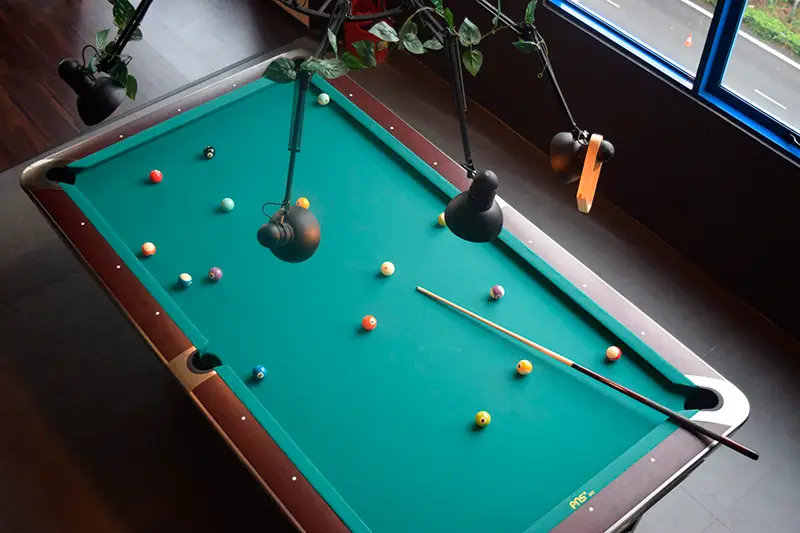

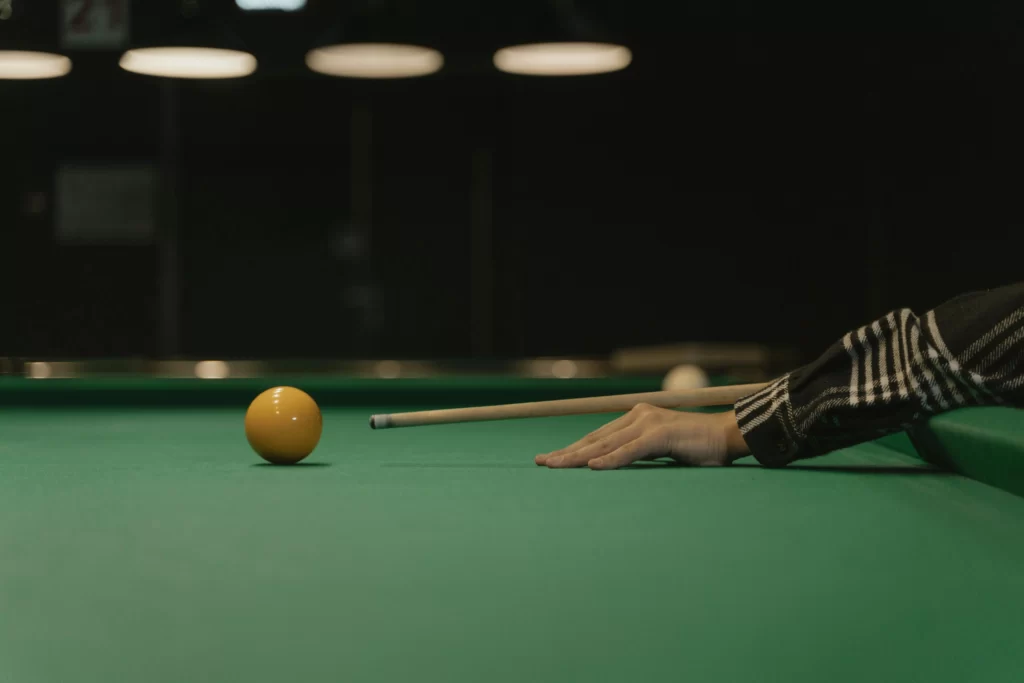 The size and design of a billiard table greatly affect the nature of the game. Knowing the specifics of the material will help you choose the right approach and improve your skills.
The size and design of a billiard table greatly affect the nature of the game. Knowing the specifics of the material will help you choose the right approach and improve your skills.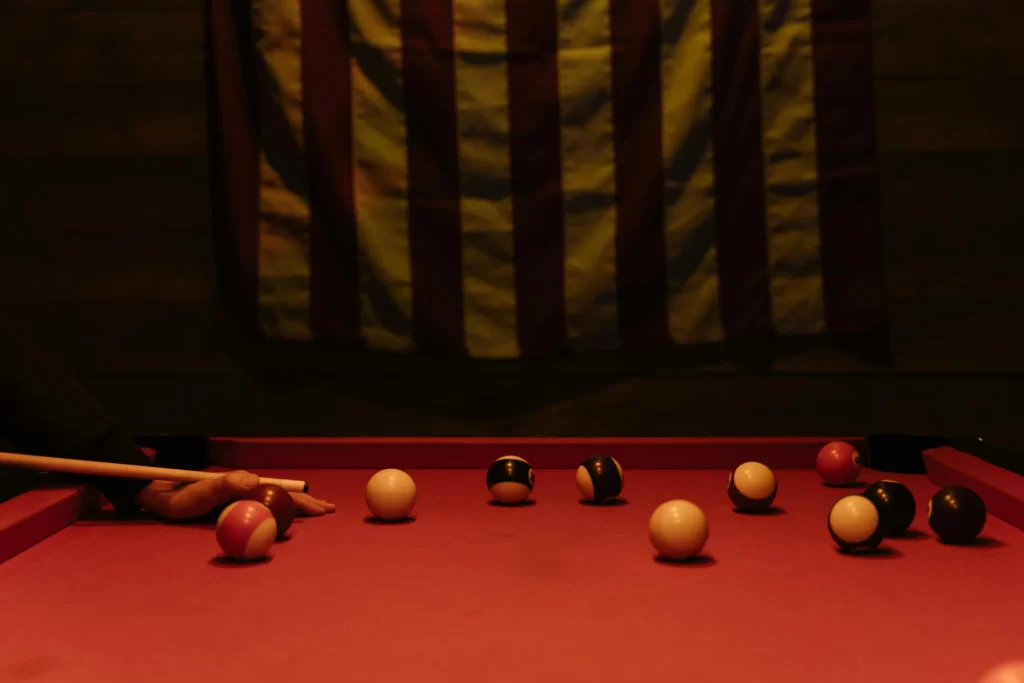 The differences between Russian billiards and American billiards are obvious in all aspects, from rules to strategy. One format requires precision and patience, the other dynamism and creativity. These disciplines offer unique challenges, allowing you to choose a game that suits you. Regardless of your preferences, billiards will always remain an intellectual and exciting leisure activity that develops thinking skills and provides fun.
The differences between Russian billiards and American billiards are obvious in all aspects, from rules to strategy. One format requires precision and patience, the other dynamism and creativity. These disciplines offer unique challenges, allowing you to choose a game that suits you. Regardless of your preferences, billiards will always remain an intellectual and exciting leisure activity that develops thinking skills and provides fun.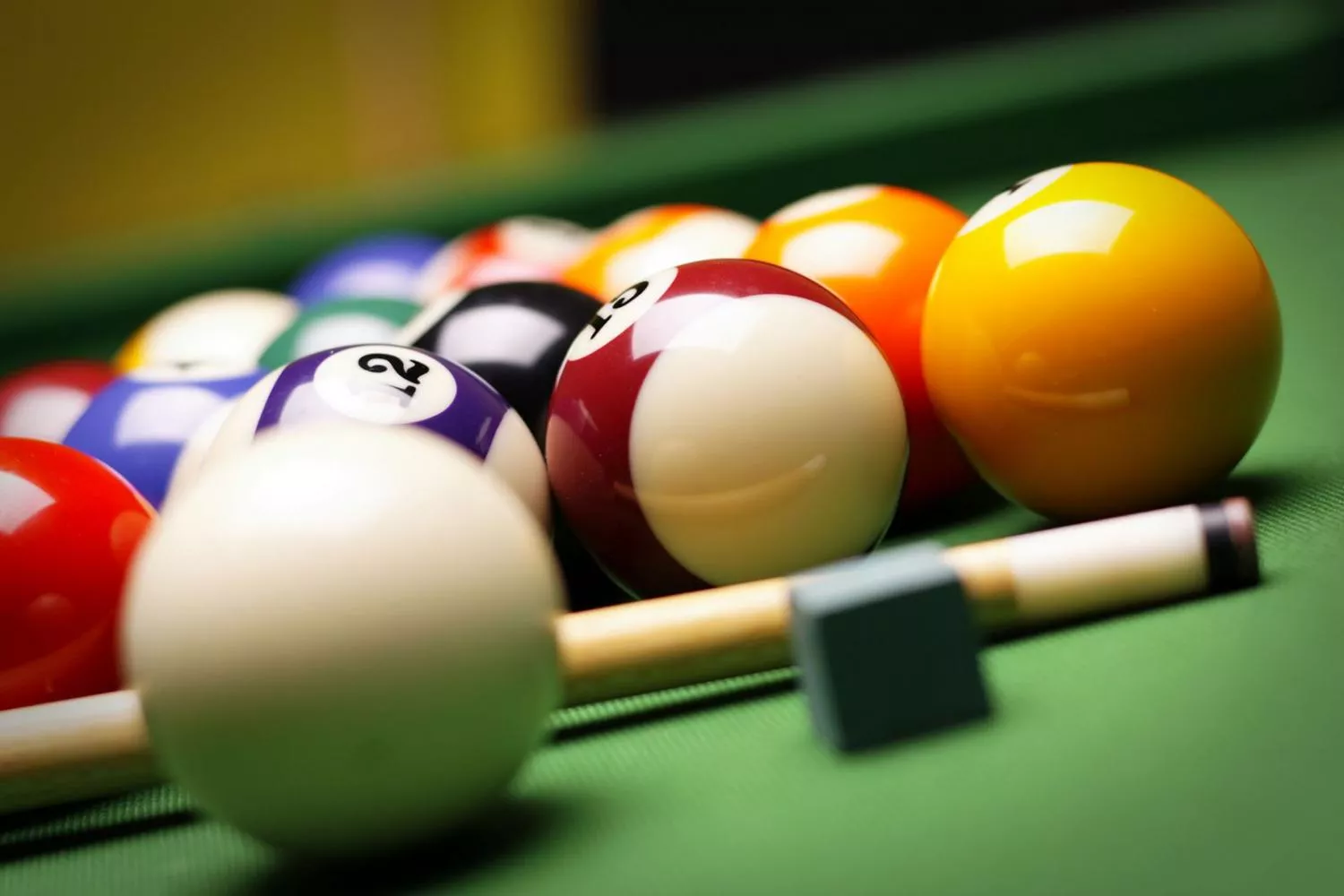
 The differences in the equipment of these two formats are also significant. Russian billiard tables are 12 feet long, making them among the largest of all versions of the game. The louzes are small, requiring incredible precision even from experienced players. The equipment of American billiards is very different: the tables are 2.5 to 3.5 metres long and the louzes are wider, making the game much easier to play. The cue of Russian billiards tends to be heavier, with a harder tip, while that of American billiards is lighter and more flexible, which helps to make fast and precise strokes.
The differences in the equipment of these two formats are also significant. Russian billiard tables are 12 feet long, making them among the largest of all versions of the game. The louzes are small, requiring incredible precision even from experienced players. The equipment of American billiards is very different: the tables are 2.5 to 3.5 metres long and the louzes are wider, making the game much easier to play. The cue of Russian billiards tends to be heavier, with a harder tip, while that of American billiards is lighter and more flexible, which helps to make fast and precise strokes. The differences between Russian billiards and American billiards cannot be underestimated: they are two completely different games, each offering its own challenges and fun. Russian billiards is based on patience, precision and strategy, while American billiards is based on speed, fun and dynamism. It is important to understand these differences in order to choose and enjoy the game in the best possible way. Whichever version is preferred, billiards remains a fascinating and versatile game, always providing fun and a chance to improve yourself.
The differences between Russian billiards and American billiards cannot be underestimated: they are two completely different games, each offering its own challenges and fun. Russian billiards is based on patience, precision and strategy, while American billiards is based on speed, fun and dynamism. It is important to understand these differences in order to choose and enjoy the game in the best possible way. Whichever version is preferred, billiards remains a fascinating and versatile game, always providing fun and a chance to improve yourself.





